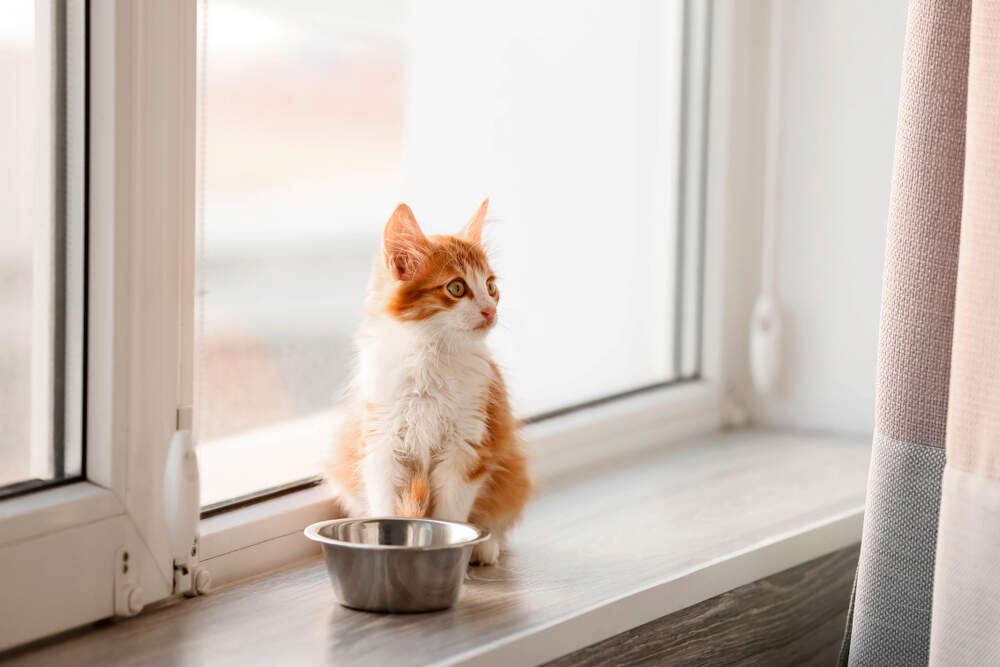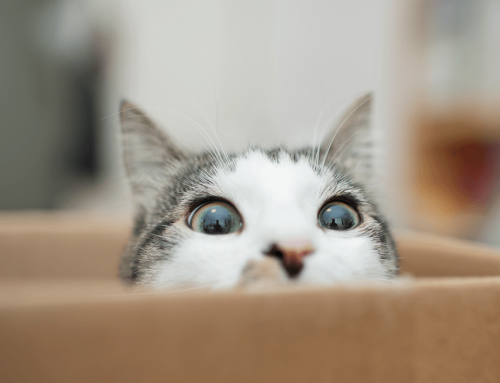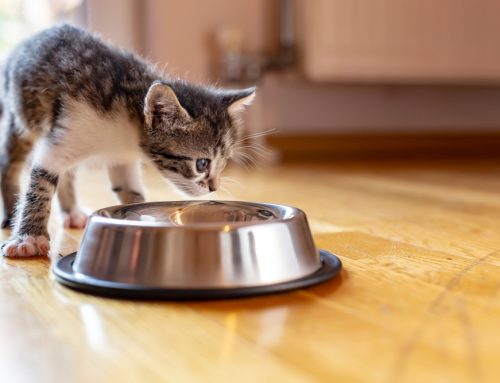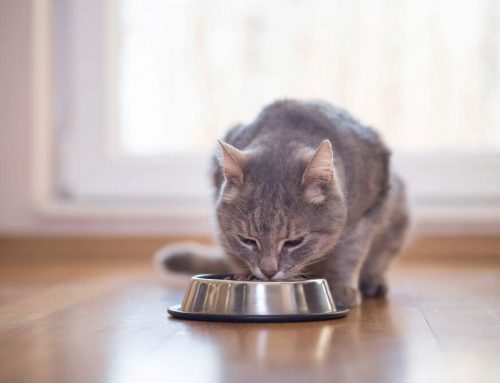By Samantha Johnson
Your little kitten is growing up, and he’s looking more like an adult cat every day. So you might find yourself asking, “How do I know when to switch from kitten to cat food?”
Kitten food is different
Think about kittens; they’re active, playful, and, most of all, growing. A kitten may go through periods when he’s increasing his body weight by 100 to 200 percent!1 By the time a kitten has reached about 80 percent of his adult body weight, his growth rate starts to taper off, but he’s still maturing. All of that activity and growth means your kitten has higher energy requirements than an adult cat. Kitten food is specifically designed to support this higher need for energy and may contain higher amounts of specific attributes, like:
- Protein. Your kitten needs plenty of protein to build up a healthy body.
- Fat. Fats are high in calories. Calories provide the energy needed to fuel a kitten’s growth (and playtime).
- Fatty and amino acids. Fatty and amino acids are essential to a kitten’s growth. Fatty acids help kittens absorb fat-soluble vitamins and support his growth and development.Amino acids are the building blocks of cells, humans and cats alike. And cats are unable to make several of them. These essential amino acids must be found in their food.3
- Vitamins and minerals. Just like you, cats need vitamins and minerals. Some vitamins, like Vitamin A, are needed for good vision and to support immune function. Certain minerals, like calcium, are essential to build strong and healthy bones.3
Happily, it’s easy to locate a kitten-friendly food that delivers these essential nutrients in the proper amounts. Just like adult cat food, you have dry (kibble) and wet (canned or pouch) options. Consider trying a tasty meal like AvoDerm Natural Chicken & Herring Meal Formula for Kittens or the Salmon & Chicken Entreé in Gravy.
Another reason why kitten food has a higher nutrient quantity is because a kitten can’t eat very large meals, so the food needs to pack a punch! Another way to help your kitten get enough to eat is to feed him smaller meals more frequently, like three meals a day. Whether feeding dry or wet food, be sure to follow the guidelines on the packaging for recommended amounts and frequency of mealtimes.
When to switch from kitten to cat food
So, how long will your kitten need the extra energy provided by kitten food? In most cases, you will need to feed your kitten this special food for about a year, since a kitten will reach an adult size between 10 and 12 months of age.4(It could take a bit longer for large cat breeds to reach their full size.) If you’re unsure, check with your veterinarian for guidance.
Begin the transition from kitten to cat food by gradually mixing the two and removing the kitten food over time. Another option is to offer both choices in individual bowls without mixing them.
Since kitten food has all of those extra nutrients, wouldn’t it be good to leave him on it forever? While it certainly wouldn’t harm your grown cat to eat a meal or two of kitten food, feeding an adult cat kitten food long-term would probably result in excess weight gain. A grown cat won’t need that much energy content, and remaining on a kitten diet could contribute to issues.
Likewise, a kitten could munch on cat food, but it shouldn’t be his regular food because your growing kitten needs a higher energy supply. If you have cats and kittens in the home, consider an all-life stage formula, like AvoDerm Natural Salmon Formula All Life Stages Cat Food. If you’re looking for a dry food option, tempt your kitten with the Grain Free Salmon with Tuna Meal formula. These options are designed for felines of all life stages and are suitable for cats and kittens alike.
With a bit of knowledge on your part, your kitten can easily switch from kitten to cat food as he grows up from a cuddly kitten to a strong and healthy adult.
1. Stuart, Annie. WebMD. “Feeding Kittens: What, When, How Much,” https://pets.webmd.com/cats/guide/feeding-your-kitten-food-and-treats
2. National Academic Press, “Your Cat’s Nutritional Needs,” 26 July 2006, https://www.nap.edu/resource/10668/cat_nutrition_final.pdf.
3. Ibid.
4. PetMD. “At What Age Are Cats Fully Grown?” https://www.petmd.com/cat/care/what-age-are-cats-fully-grown





